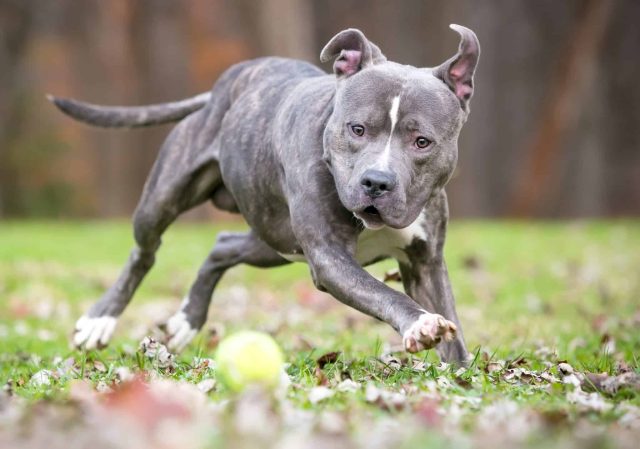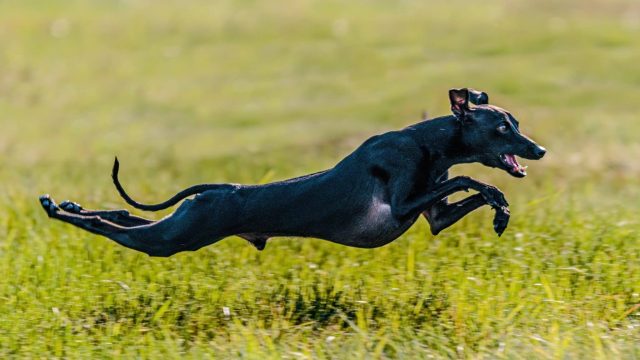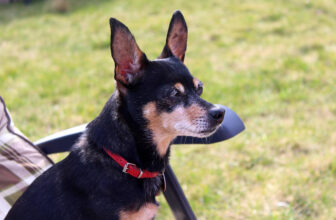
Check out our latest products
Dogs rely on a healthy spine for everything from wagging their tails to chasing a ball across the yard. Yet many pet parents only think about spinal health after an injury or diagnosis. By learning how the canine spine works, you can better understand your dog’s movements, posture, and even pain signals. The spine isn’t just a support structure—it’s the command highway between your dog’s brain and every part of their body. In this article, we’ll break down the spinal anatomy and function in simple, pet parent–friendly terms so you can better protect your pup’s mobility and quality of life.
Anatomy 101: The Building Blocks of the Spine
A dog’s spine is made up of vertebrae, which are small bones that stack to form the vertebral column. These bones form the main structural support of your dog’s body and create a protective tunnel for the spinal cord, a critical part of the central nervous system.
Dogs have seven cervical (neck) vertebrae, thirteen thoracic (chest) vertebrae, seven lumbar (lower back) vertebrae, three fused sacral (pelvic) vertebrae, and a variable number of caudal (tail) vertebrae, depending on the breed and tail length.
Each vertebra is shaped a little differently depending on its location and function. The cervical vertebrae, for example, are smaller and allow for a wide range of head motion. Thoracic vertebrae anchor the ribs and help protect the chest cavity, while lumbar vertebrae are built for strength and flexibility to support jumping and running. The sacral vertebrae connect to the pelvis and transmit forces from the hind legs into the spine. Caudal vertebrae make up the tail, which aids in balance and communication.
The Spinal Cord: Your Dog’s Neural Superhighway

Running through the center of these vertebrae is the spinal cord, a bundle of nerves that connects the brain to the rest of the body. Think of it as a data highway, carrying signals back and forth between the brain and the limbs, muscles, skin, and organs.
The spinal cord is protected by a fluid called cerebrospinal fluid (CSF) and three layers of protective tissue called meninges. Despite these defenses, the spinal cord is still vulnerable to trauma, pressure, inflammation, or disease. Injuries or degeneration in the spine can compress the cord or nerves, leading to pain, weakness, or even paralysis.
Nerves branch out from the spinal cord through small openings between vertebrae. These spinal nerves carry:
-
Motor signals from the brain to muscles (to move),
-
Sensory signals from the body to the brain (to feel pain, pressure, heat), and
-
Autonomic signals that control automatic functions like heart rate and digestion.
Damage to any part of this system can disrupt your dog’s ability to move, balance, or even control bodily functions.
How the Spine Supports Movement
The spine’s design allows dogs to move fluidly while staying protected. Ligaments and intervertebral discs between the vertebrae absorb shock and provide flexibility. Discs act like cushions that prevent bones from grinding together. When healthy, the spine allows dogs to:
-
Bend and twist their bodies during play,
-
Sprint and stop with agility,
-
Perform coordinated movements like jumping or climbing stairs.
Injuries to the spine, such as a herniated disc (especially common in long-backed dogs like Dachshunds), can interrupt these movements or cause pain. That’s why spinal alignment and strength are critical, especially in athletic or aging dogs.
The Role of the Spine in Balance and Posture

Your dog’s spine plays a key role in balance and posture. Just like humans, dogs rely on their spinal alignment and core strength to maintain upright posture, distribute weight, and stay coordinated.
The tail, an extension of the spine, also helps with balance. Dogs use it as a counterweight when they run, turn sharply, or adjust position on uneven terrain. It’s especially important for working breeds, sporting dogs, and those with high energy demands.
Poor posture or spinal misalignment can lead to compensatory strain in other areas like the hips or shoulders. Over time, this can result in pain, stiffness, and changes in gait. Paying attention to how your dog sits, stands, or walks can provide important clues about spinal health.
Why Spinal Health Matters at Every Life Stage
Spinal issues can affect dogs of all ages, but certain stages come with unique risks:
-
Puppies: Rapid growth, trauma, or congenital conditions may affect developing spines.
-
Adult dogs: Working dogs or active breeds may develop wear-and-tear injuries or herniated discs.
-
Senior dogs: Arthritis and spinal degeneration (such as spondylosis) become more common and can reduce mobility.
Maintaining spinal health throughout your dog’s life involves routine vet checks, weight management, and safe physical activity. Breeds prone to spinal issues may benefit from ramps instead of stairs, harnesses instead of collars, and even therapeutic treatments like massage, acupuncture, or physical therapy.
A Strong Spine Equals a Happy, Mobile Dog
Supporting Your Dog’s Spine for a Lifetime of Movement

Your dog’s spine is far more than just a structural backbone—it’s the nerve center of their body and the foundation of their freedom to move, play, and interact with the world. Understanding how it functions empowers you to recognize early warning signs, prevent injury, and advocate for your dog’s physical well-being.
Whether your dog is a couch snuggler or an agility champ, spinal health supports their balance, coordination, and quality of life. A well-cared-for spine means fewer limitations and more tail-wagging joy at every stage of life. So take the time to watch how your dog moves—you’ll be amazed at how much their spine says without a single word.







![[5G & 2.4G] 2K Indoor Security Camera for Home Security, AI Voice Change for 2-Way Talk, Motion Detection, Night Vision, 24/7 SD Recording/Cloud Storage, WiFi Home Camera, Pet Cam with Phone App](https://i3.wp.com/m.media-amazon.com/images/I/61I2U+sTT3L._AC_SL1500_.jpg?w=300&resize=300,300&ssl=1)





